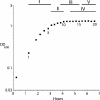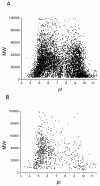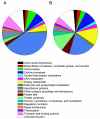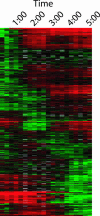Formation and composition of the Bacillus anthracis endospore
- PMID: 14679236
- PMCID: PMC303457
- DOI: 10.1128/JB.186.1.164-178.2004
Formation and composition of the Bacillus anthracis endospore
Abstract
The endospores of Bacillus anthracis are the infectious particles of anthrax. Spores are dormant bacterial morphotypes able to withstand harsh environments for decades, which contributes to their ability to be formulated and dispersed as a biological weapon. We monitored gene expression in B. anthracis during growth and sporulation using full genome DNA microarrays and matched the results against a comprehensive analysis of the mature anthrax spore proteome. A large portion (approximately 36%) of the B. anthracis genome is regulated in a growth phase-dependent manner, and this regulation is marked by five distinct waves of gene expression as cells proceed from exponential growth through sporulation. The identities of more than 750 proteins present in the spore were determined by multidimensional chromatography and tandem mass spectrometry. Comparison of data sets revealed that while the genes responsible for assembly and maturation of the spore are tightly regulated in discrete stages, many of the components ultimately found in the spore are expressed throughout and even before sporulation, suggesting that gene expression during sporulation may be mainly related to the physical construction of the spore, rather than synthesis of eventual spore content. The spore also contains an assortment of specialized, but not obviously related, metabolic and protective proteins. These findings contribute to our understanding of spore formation and function and will be useful in the detection, prevention, and early treatment of anthrax. This study also highlights the complementary nature of genomic and proteomic analyses and the benefits of combining these approaches in a single study.
Figures









References
-
- Balassa, G., P. Milhaud, E. Raulet, M. Silva, and J. Sousa. 1979. A Bacillus subtilis mutant requiring dipicolinic acid for the development of heat-resistant spores. J. Gen. Microbiol. 110:365-379. - PubMed
Publication types
MeSH terms
Substances
Grants and funding
LinkOut - more resources
Full Text Sources
Other Literature Sources
Molecular Biology Databases

